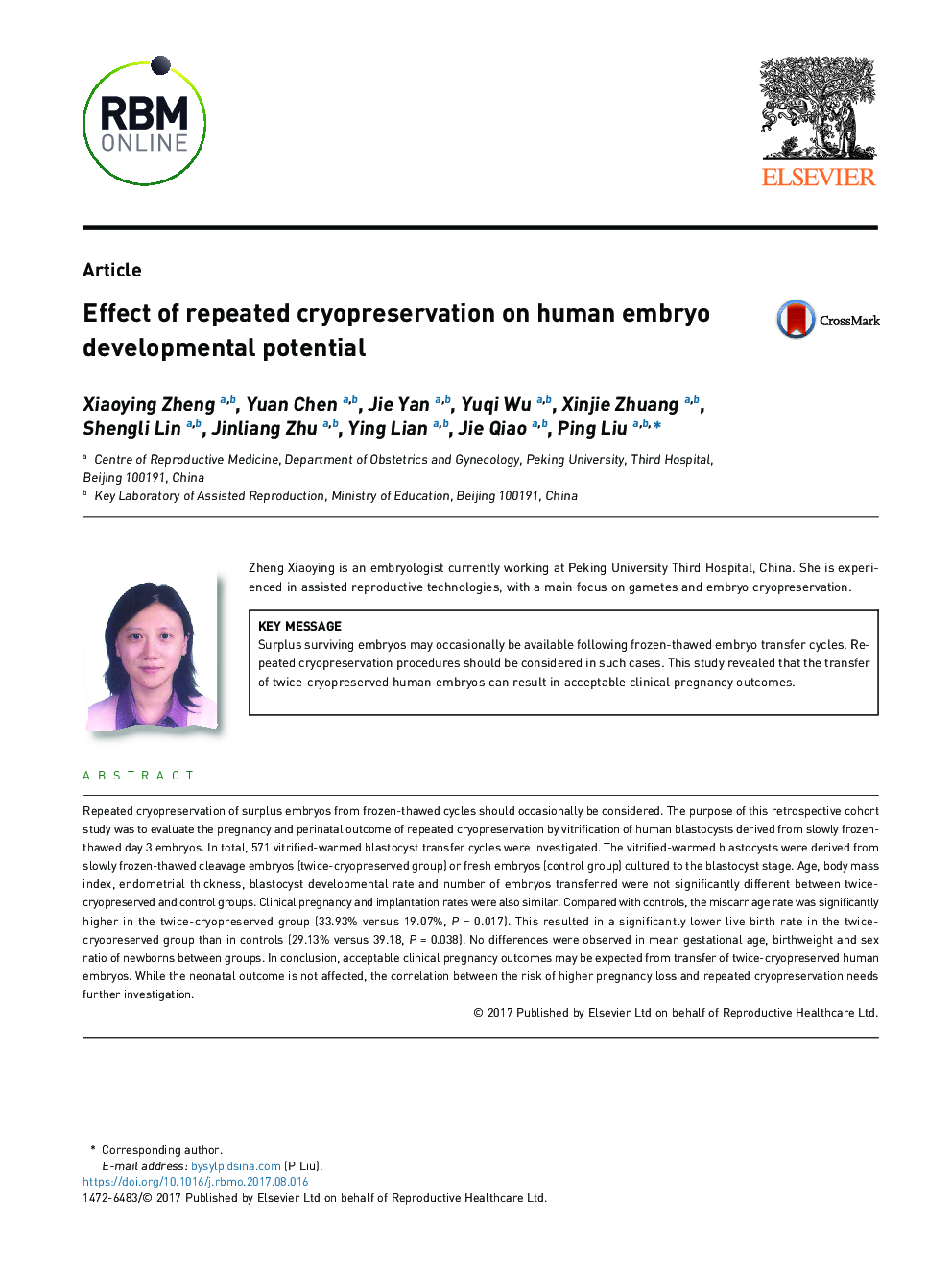| Article ID | Journal | Published Year | Pages | File Type |
|---|---|---|---|---|
| 8784113 | Reproductive BioMedicine Online | 2017 | 6 Pages |
Abstract
Repeated cryopreservation of surplus embryos from frozen-thawed cycles should occasionally be considered. The purpose of this retrospective cohort study was to evaluate the pregnancy and perinatal outcome of repeated cryopreservation by vitrification of human blastocysts derived from slowly frozen-thawed day 3 embryos. In total, 571 vitrified-warmed blastocyst transfer cycles were investigated. The vitrified-warmed blastocysts were derived from slowly frozen-thawed cleavage embryos (twice-cryopreserved group) or fresh embryos (control group) cultured to the blastocyst stage. Age, body mass index, endometrial thickness, blastocyst developmental rate and number of embryos transferred were not significantly different between twice-cryopreserved and control groups. Clinical pregnancy and implantation rates were also similar. Compared with controls, the miscarriage rate was significantly higher in the twice-cryopreserved group (33.93% versus 19.07%, P = 0.017). This resulted in a significantly lower live birth rate in the twice-cryopreserved group than in controls (29.13% versus 39.18, P = 0.038). No differences were observed in mean gestational age, birthweight and sex ratio of newborns between groups. In conclusion, acceptable clinical pregnancy outcomes may be expected from transfer of twice-cryopreserved human embryos. While the neonatal outcome is not affected, the correlation between the risk of higher pregnancy loss and repeated cryopreservation needs further investigation.
Keywords
Related Topics
Health Sciences
Medicine and Dentistry
Obstetrics, Gynecology and Women's Health
Authors
Xiaoying Zheng, Yuan Chen, Jie Yan, Yuqi Wu, Xinjie Zhuang, Shengli Lin, Jinliang Zhu, Ying Lian, Jie Qiao, Ping Liu,
